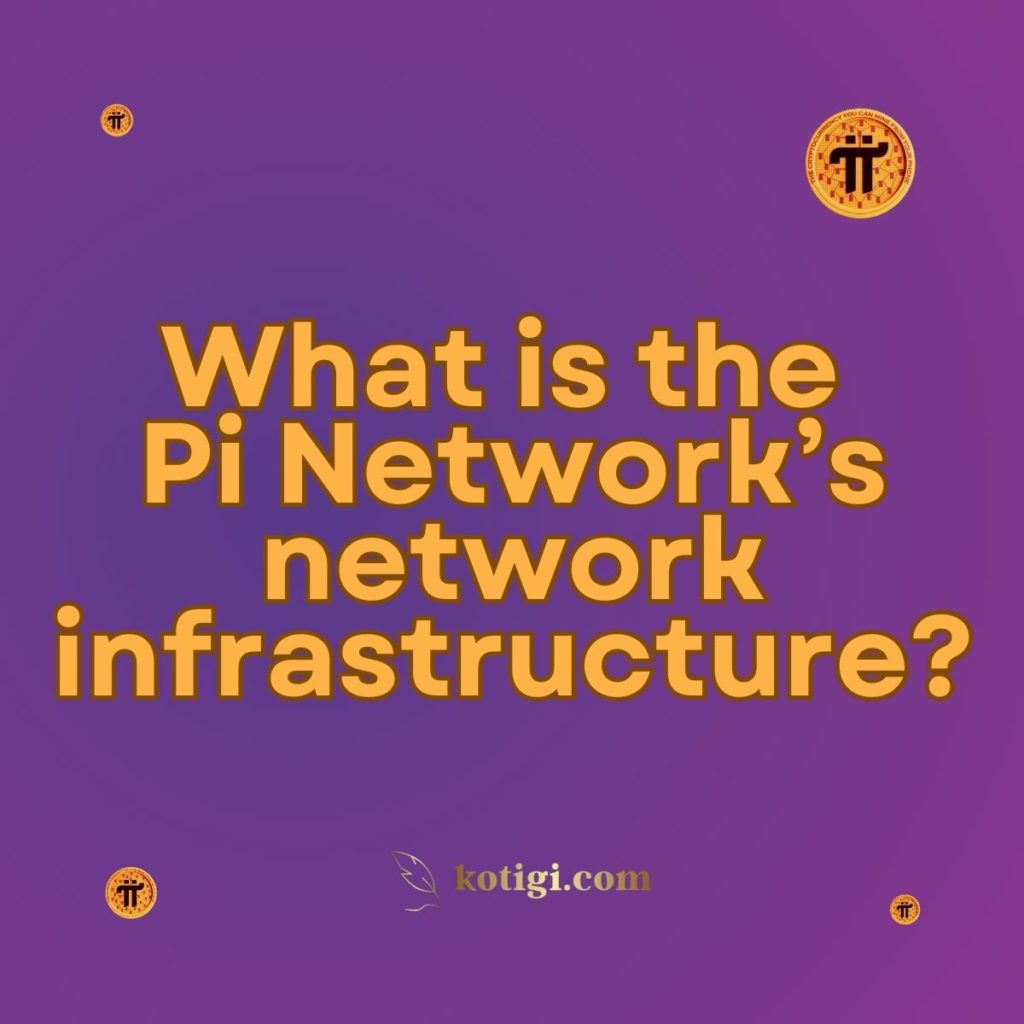
What is the Pi Network’s network infrastructure?
Pi Network’s network infrastructure comprises a unique blend of decentralized nodes and a user-friendly mobile application, designed to provide efficient mining and transaction capabilities while ensuring security and scalability within the cryptocurrency ecosystem.
Introduction
The backbone of any successful cryptocurrency platform is its network infrastructure. For Pi Network, this infrastructure is designed to support its mission of making cryptocurrency accessible to everyone. Unlike traditional cryptocurrencies that often rely on energy-intensive mining, Pi Network utilizes a unique architecture that allows users to mine using their mobile devices while maintaining security and efficiency. This post will delve into the various components of Pi Network’s network infrastructure, including its decentralized nodes, consensus mechanisms, transaction processing, and security measures. Understanding these elements is crucial for users who want to engage with the Pi Network ecosystem effectively.
The Importance of Network Infrastructure in Cryptocurrency
Network infrastructure refers to the underlying technology and systems that support the functioning of a cryptocurrency platform. A robust infrastructure is vital for ensuring security, scalability, and user engagement. In the cryptocurrency space, network infrastructure encompasses everything from mining mechanisms and transaction processing to data storage and security protocols.
For Pi Network, a well-designed infrastructure is particularly important because it aims to attract a wide range of users, from casual participants to serious investors. The network must be capable of handling a growing number of users and transactions without compromising performance or security.
Decentralized Nodes
At the heart of Pi Network’s infrastructure is a system of decentralized nodes. These nodes play a crucial role in maintaining the integrity and security of the network.
Role of Nodes
Nodes are computers or devices that participate in the network by validating transactions and maintaining a copy of the blockchain. In Pi Network, users can become nodes by simply running the Pi Network app on their mobile devices or computers.
Types of Nodes
Pi Network supports various types of nodes, including:
- Mobile Nodes: Most users participate as mobile nodes, mining Pi coins using their smartphones. This model promotes widespread participation and accessibility.
- Home Nodes: Some users opt to run home-based nodes on their computers. These nodes contribute to transaction validation and help secure the network while also offering more robust performance compared to mobile nodes.
Network Resilience
The decentralized nature of Pi Network’s nodes enhances the overall resilience of the network. By distributing the workload among many users, the system is less vulnerable to attacks and failures, ensuring continuity in service.
Consensus Mechanisms
Consensus mechanisms are vital for achieving agreement among nodes on the state of the blockchain. Pi Network employs a unique consensus algorithm designed to facilitate efficient transaction processing while minimizing resource consumption.
Unique Consensus Algorithm
Unlike traditional proof-of-work systems that require significant computational power, Pi Network utilizes a consensus mechanism that relies on social trust and the concept of “security circles.” Users form small groups of trusted nodes, which helps validate transactions more efficiently.
Security Circles
Security circles enhance the network’s security by requiring transactions to be approved by multiple trusted nodes within a user’s circle. This approach not only makes the network more secure but also encourages community engagement and collaboration.
Efficiency and Scalability
The unique consensus mechanism employed by Pi Network is designed to be energy-efficient and scalable. As the number of users grows, the consensus process can adapt to accommodate increasing transaction volumes without sacrificing performance.
Transaction Processing
Transaction processing is a crucial aspect of any cryptocurrency network, ensuring that user transactions are executed swiftly and accurately.
Real-Time Processing
Pi Network is designed to facilitate real-time transaction processing. When a user initiates a transaction, the network quickly validates it through the consensus mechanism, allowing for near-instant confirmations.
Low Fees
One of the key advantages of Pi Network’s transaction processing is its low fee structure. Because the network relies on decentralized nodes and a unique consensus algorithm, transaction fees are significantly lower than those found on many traditional cryptocurrency platforms.
User Experience
Efficient transaction processing enhances the overall user experience within the Pi Network ecosystem. Users can send and receive Pi coins quickly and without the frustration often associated with slower, more resource-intensive networks.
Security Measures
Security is paramount in the cryptocurrency space, and Pi Network has implemented several measures to protect user data and transactions.
Encryption Protocols
Pi Network employs robust encryption protocols to secure user data and transactions. This ensures that sensitive information is protected from unauthorized access, fostering user trust in the platform.
Regular Security Audits
Conducting regular security audits is a critical component of Pi Network’s security strategy. These audits help identify potential vulnerabilities and ensure that the network remains resilient against attacks.
Incident Response Plans
Having a well-defined incident response plan allows Pi Network to respond quickly to any security breaches or incidents. This proactive approach helps minimize potential damage and maintain user confidence in the network.
Conclusion
Pi Network’s network infrastructure is designed to support a secure, efficient, and user-friendly cryptocurrency experience. With its decentralized nodes, innovative consensus mechanisms, efficient transaction processing, and robust security measures, Pi Network is well-equipped to handle the challenges of a growing user base. As the cryptocurrency landscape continues to evolve, Pi Network’s commitment to maintaining and improving its infrastructure will be crucial for its success and user engagement.
Key Takeaways:
- Pi Network’s network infrastructure is designed to provide a secure and efficient cryptocurrency experience for users.
- Decentralized nodes play a critical role in validating transactions and maintaining the integrity of the network.
- The unique consensus algorithm relies on social trust and security circles, promoting efficiency and scalability.
- Transaction processing is designed for real-time execution with low fees, enhancing user satisfaction.
- Robust security measures, including encryption and regular audits, protect user data and foster trust.
- A well-defined incident response plan ensures that the network can respond effectively to potential security incidents.





